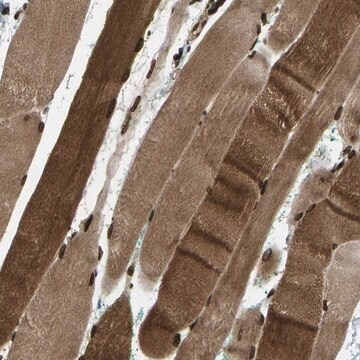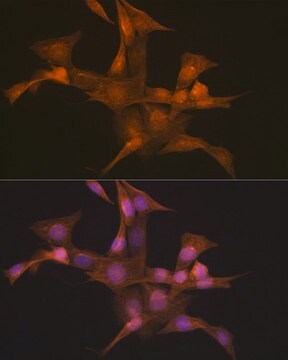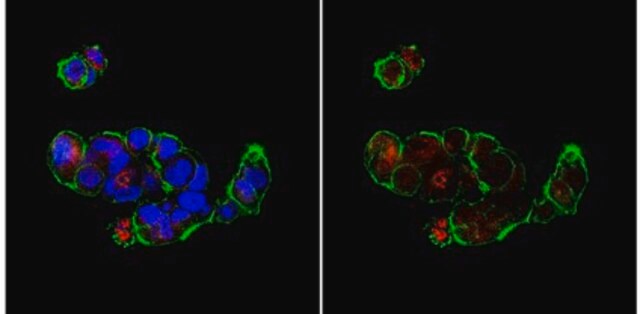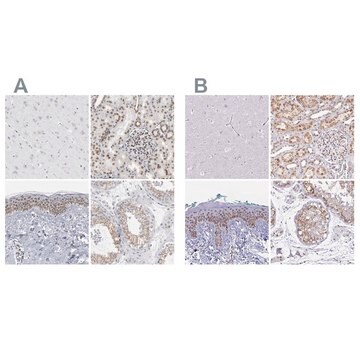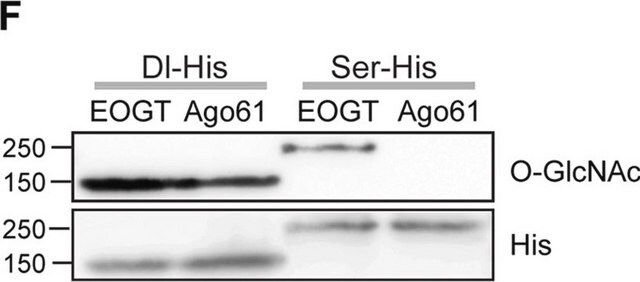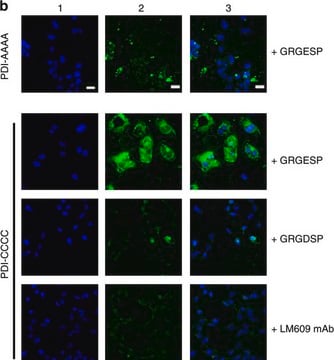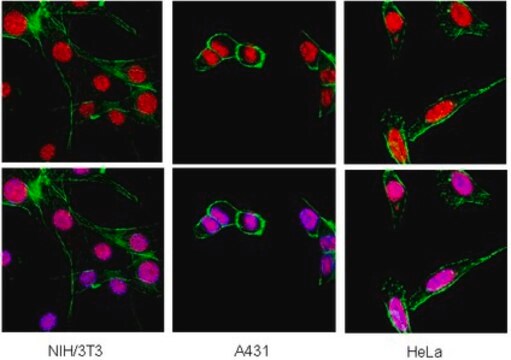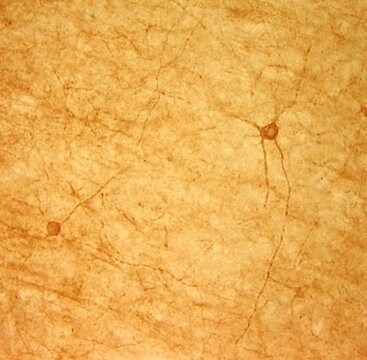MABT843
Anti-SYNE1 Antibody, clone 7A12 (MANNES1A)
clone 7A12, from mouse
Synonim(y):
Nesprin-1, Enaptin, Myne-1, Myocyte nuclear envelope protein 1, Nuclear envelope spectrin repeat protein 1, Synaptic nuclear envelope protein 1, Syne-1
About This Item
Polecane produkty
pochodzenie biologiczne
mouse
Poziom jakości
forma przeciwciała
purified immunoglobulin
rodzaj przeciwciała
primary antibodies
klon
7A12, monoclonal
reaktywność gatunkowa
rat, human, mouse, rabbit
metody
immunocytochemistry: suitable
western blot: suitable
izotyp
IgG1κ
numer dostępu NCBI
numer dostępu UniProt
Warunki transportu
ambient
docelowa modyfikacja potranslacyjna
unmodified
informacje o genach
human ... SYNE1(23345)
Opis ogólny
Specyficzność
Immunogen
Zastosowanie
Cell Structure
Immunocytochemistry Analysis: A representative lot immunostained the nucleus of acetone/methanol-fixed rat aortic vascular smooth muscle cells (VSMCs) by fluorescent immunocytochemistry (Duong, N.T., et al. (2014). PLoS One. 9(4):e94380).
Immunocytochemistry Analysis: A representative lot detected SYNE1 immunoreactivity predominantly in the nucleus by fluorescent immunocytochemistry staining of acetone/methanol-fixed human skin fibroblasts regardless of their emerin expression. SYNE1 immunoreactivity was redistributed to ER in the absence of lamin A/C in Lamn-/- mouse embryonic fibroblasts (MEFs) (Randles, K.N., et al. (2010). Dev. Dyn. 239(3):998-1009).
Immunocytochemistry Analysis: A representative lot immunostained multinucleate myotube nuclear envelopes, while only very weak or little SYNE1 immunoreactivity was seen among mononucleated myoblasts in myoblast cultures undergoing differentiation (Randles, K.N., et al. (2010). Dev. Dyn. 239(3):998-1009).
Western Blotting Analysis: A representative lot detected multiple SYNE1 spliced isoforms (including Giant/Enaptin, Beta, and Alpha) in human muscle tissue, skeletal muscle cells and dermal fibroblasts, as well as in Lmna-/- mouse embryonic fibroblasts (MEFs) (Randles, K.N., et al. (2010). Dev. Dyn. 239(3):998-1009).
Jakość
Isotyping Analysis: The identity of this monoclonal antibody is confirmed by isotyping test to be mouse IgG1 .
Opis wartości docelowych
Postać fizyczna
Przechowywanie i stabilność
Inne uwagi
Oświadczenie o zrzeczeniu się odpowiedzialności
Nie możesz znaleźć właściwego produktu?
Wypróbuj nasz Narzędzie selektora produktów.
Kod klasy składowania
12 - Non Combustible Liquids
Klasa zagrożenia wodnego (WGK)
WGK 1
Temperatura zapłonu (°F)
Not applicable
Temperatura zapłonu (°C)
Not applicable
Certyfikaty analizy (CoA)
Poszukaj Certyfikaty analizy (CoA), wpisując numer partii/serii produktów. Numery serii i partii można znaleźć na etykiecie produktu po słowach „seria” lub „partia”.
Masz już ten produkt?
Dokumenty związane z niedawno zakupionymi produktami zostały zamieszczone w Bibliotece dokumentów.
Nasz zespół naukowców ma doświadczenie we wszystkich obszarach badań, w tym w naukach przyrodniczych, materiałoznawstwie, syntezie chemicznej, chromatografii, analityce i wielu innych dziedzinach.
Skontaktuj się z zespołem ds. pomocy technicznej